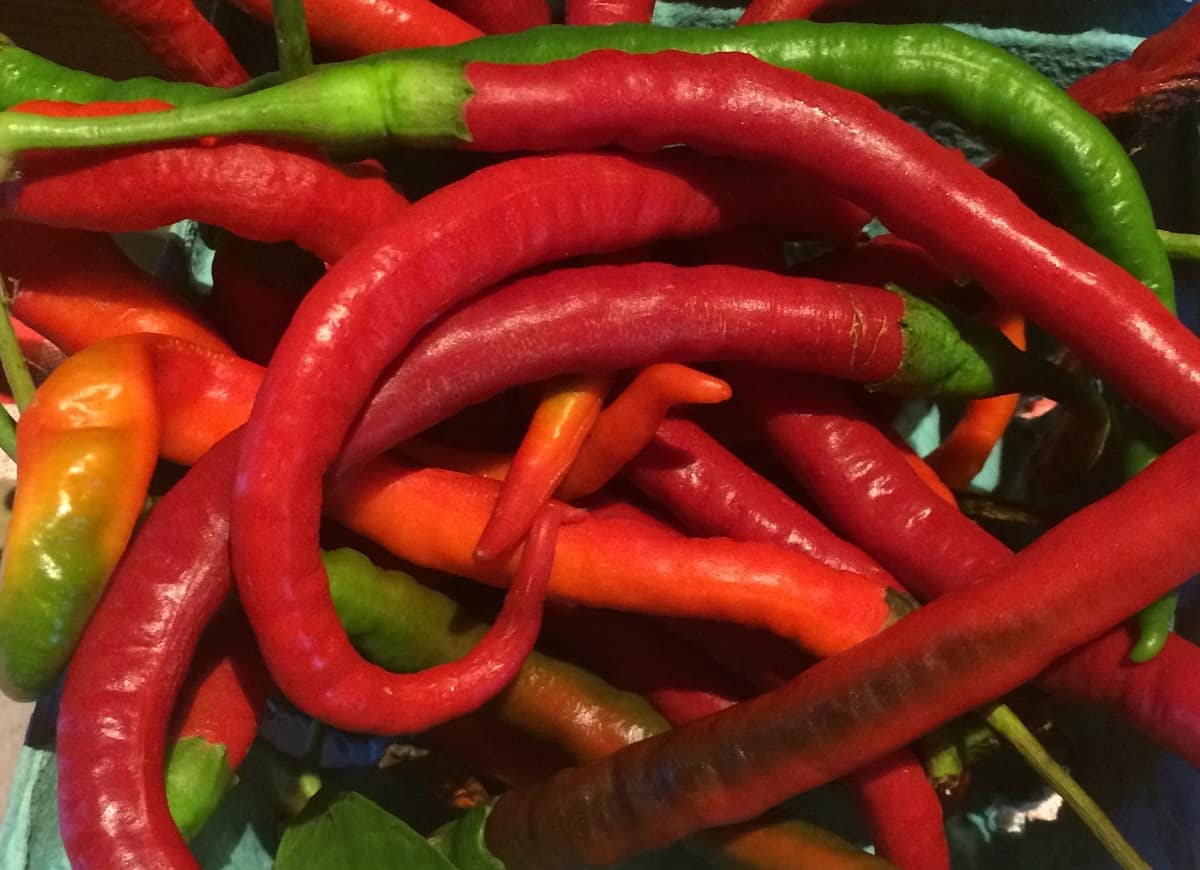It’s #VeggieWednesday – and today, it’s all about hot peppers! Red Wiggler grows many peppers, from mild sweet to hot. Hot peppers (or chiles/chilis) are nutritious and rich in vitamins A, C, and E. Benefits include promoting weight loss, reducing cancer risk, promoting a healthy heart, reducing migraines, clearing one’s sinuses, suppressing psoriasis, and fighting the flu, colds, and fungal infections.
These are long cayenne peppers.

Two new hot pepper varieties we are growing this year are a 2” mild habanero called the Aji Dulce and a 3” green to yellow southeast Asian hot pepper called the Kristian (F1) Thai. Hot peppers come in many sizes, shapes, colors, and spiciness; and over the last few weeks, we have been able to distribute different varieties of peppers (mild to hot) to our CSA customers and our Farm to Food Bank Program.
In this photo, the bright red/orange ones are the Aji Dulce, and the green ones are the Kristian (F1) Thai hot peppers.
People think the seeds are the spiciest and hottest parts of hot peppers. But they are not. It’s the chemical compound capsaicin (an oil), which covers the seeds and is concentrated in the flesh near the seeds, namely the pith and the ribs. The part closest to the stem is usually the hotter part of hot peppers because it has the highest concentration of capsaicin. If you eat something and it’s too hot or spicy for you, drinking water usually won’t help. Dairy can help though, so drink some milk or eat some cheese.
These green beauties are jalapeno peppers.
You might ask yourself, when growing hot peppers outdoors, why does it seem like certain animals can eat hot peppers whole? It turns out only mammals are sensitive to capsaicin, and birds are immune to capsaicin. So, birds and other non-mammals can eat hot peppers and spread them by excreting the seeds.
Here are Hungarian hot wax peppers growing out in our fields.
Hotness and spiciness of peppers is ranked on the Scoville scale in terms of Scoville Heat Units (SHU). The Scoville scale is named after pharmacist Wilbur Scoville, who came up with it in 1912. The Scoville scale goes from 0 to 16,000,000,000. Actual heat of hot peppers varies and is dependent on many factors, including environment, seed lineage, etc. The list of the hottest peppers in the world keeps growing, as growers are producing hotter and hotter hybrids. Here are some examples of how common peppers rank on the Scoville scale: bell peppers (0 SHU), pepperoncini peppers (100 – 500 SHU), Anaheim peppers (500 – 2,500 SHU), jalapeno peppers (2,500 – 8,000 SHU), habanero peppers (100,000 – 350,000 SHU), and ghost peppers (1,000,000+ SHU). The hottest chili in the world currently is the Carolina Reaper chili pepper in the range of 1,400,000 – 2,200,000 SHU.
People love peppers in their many and varied forms, from sweet, hot, to tear inducing fiery. Some hot pepper dishes and recipes include salsa, red chile hot sauce, queso, sweet and spicy pepper jelly, pepper poppers, and grilled cheese filled bacon-wrapped jalapeno peppers. Add some spice to your life and give hot peppers a try!
In the photos below: 1. Aji Dulce. 2. Bangkok Thai chiles.





